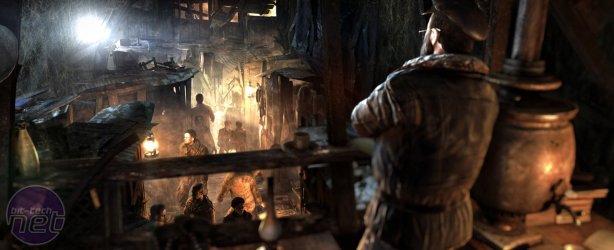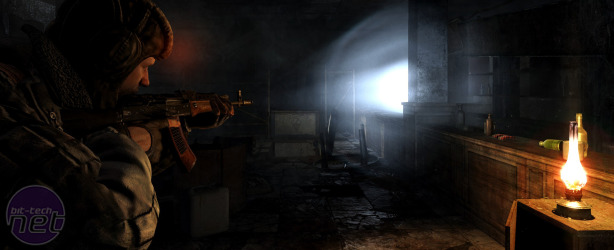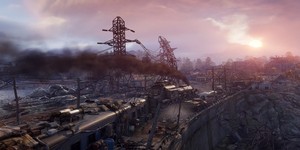
Metro: Last Light Preview
Beyond the nitty-gritty of a specific new feature however, there are plenty of other changes which seem to be emerging in Metro: Last Light - the biggest of which is the types of and variety of environments on show.Put simply, in Metro: Last Light, nuclear winter is starting to an end. The outside environments are instead starting to show signs of a nuclear spring.
Rather than this being something which shows up in particular places and at certain times, the idea of nuclear spring is an influence which has been applied broadly to everything within the game - the palette, the models, the exact areas you'll visit. It's an advantage of working from an original plot this time around too; THQ is able to more freely explore the fiction that's established in the Metro 2033 novels.
(THQ were keen to stress that Metro 2033 author Dmitry Glukhovsky still remains involved with the project and has given 'his blessing' to the video game, however.)
There are examples of nuclear spring that can be specifically pointed to, however. The new weather system, for example, brings a more tempestuous feel to things and there are often wisps of mutated plantlife feeding off the acid raid where previously there'd be bare concrete. These especially help bring a simultaneous sense of the familiar and the alien to world; weeds, Jim, but not as we know them.
It's worth pointing out that the weather system is not without problems, however - mainly a case of how it's being presented. In our preview session the weather system was repeatedly referred to as being 'dynamic' and a quick Google search suggests this may have been the case for other previewers too. Insistent questioning suggests that this is overselling it however, as THQ admitted to us that there's no randomness or dynamism in how the weather works. Where it rains, shines, lightning bolts and blows is all pre-set, with no variation showing up in subsequent playthroughs.
Personally, considering how scripted that suggests the system is, we'd struggle to label anything about it 'dynamic' - though that's not to rubbish it in any other sense. The rain looks fantastic, for example, and one combat arena we saw in which lightning repeatedly thumped at the walls around us was particularly evocative.
Well, what little we could see of it was anyway - we kept getting muck and rainwater all over our gasmask, afterall. It really is the simple ideas which have the biggest impact.
As we feel obligated to say with all preview of games which are still a long way from release yet however, it still remains to be seen whether THQ will be able to deliver on the promise of what they've shown so far. We're definitely aware that we only saw above-ground portions of the game and little of the underground environments that will likely form the bulk of the game, for example, so we're hesitant to rush to judgement. THQ's wider fate also has to be considered when pondering if it can actually fulfil its creative vision.
That said, for the moment, Metro: Last Light has definitely got our attention and we'll happily maintain a sense of optimism until we next get a look at what seems to be a clear spiritual successor to STALKER.
Metro: Last Light is being developed by THQ and will be published on PC, Xbox 360 and PS3 by THQ early next year.

MSI MPG Velox 100R Chassis Review
October 14 2021 | 15:04











Want to comment? Please log in.